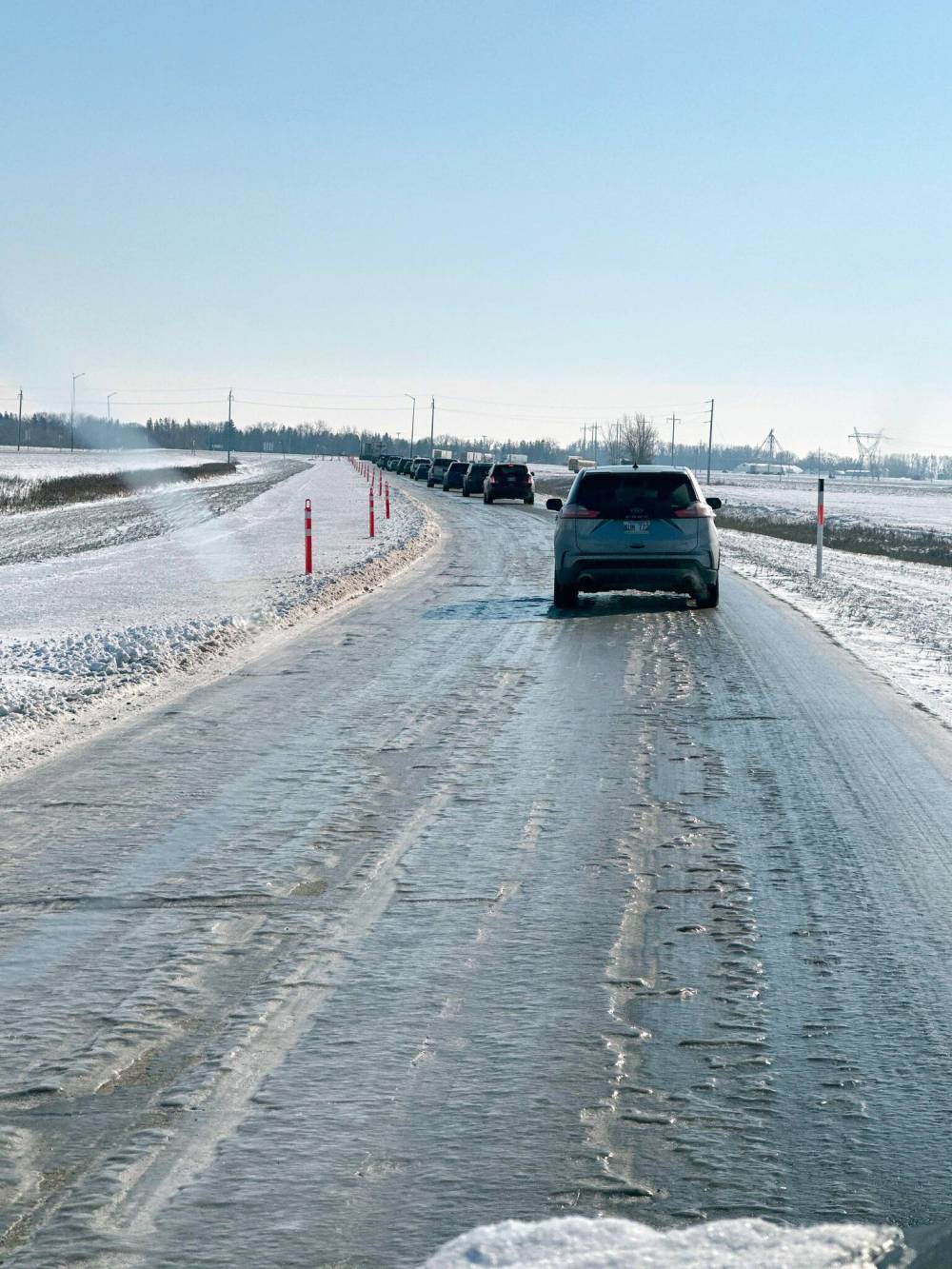Maintenance is key to road safety
Advertisement
Read this article for free:
or
Already have an account? Log in here »
To continue reading, please subscribe:
Monthly Digital Subscription
$1 per week for 24 weeks*
- Enjoy unlimited reading on winnipegfreepress.com
- Read the E-Edition, our digital replica newspaper
- Access News Break, our award-winning app
- Play interactive puzzles
*Billed as $4.00 plus GST every four weeks. After 24 weeks, price increases to the regular rate of $19.00 plus GST every four weeks. Offer available to new and qualified returning subscribers only. Cancel any time.
Monthly Digital Subscription
$4.75/week*
- Enjoy unlimited reading on winnipegfreepress.com
- Read the E-Edition, our digital replica newspaper
- Access News Break, our award-winning app
- Play interactive puzzles
*Billed as $19 plus GST every four weeks. Cancel any time.
To continue reading, please subscribe:
Add Free Press access to your Brandon Sun subscription for only an additional
$1 for the first 4 weeks*
*Your next subscription payment will increase by $1.00 and you will be charged $16.99 plus GST for four weeks. After four weeks, your payment will increase to $23.99 plus GST every four weeks.
Read unlimited articles for free today:
or
Already have an account? Log in here »
Hey there, time traveller!
This article was published 13/11/2023 (714 days ago), so information in it may no longer be current.
While it’s reasonable to describe the stretch of the Trans-Canada Highway that traverses Manitoba from Ontario to Saskatchewan as this province’s most significant span of roadway infrastructure — it is, after all, designated as Highway 1 — it could fairly be argued that Provincial Trunk Highway 75, from Winnipeg to the Canada-U.S. border, is its most important.
The four-lane divided highway is the primary transport route for some $19 billion in trade annually, and is the main artery on which thousands upon thousands of tourists make their way to and from the United States.
In addition to being, as former transportation and infrastructure minister Doyle Piwniuk earlier this year described it, “critical to the safe, efficient transportation of goods, products and services to international markets,” PTH 75 is noteworthy for being a constant source of concern, frustration and occasional outrage, owing to the alarming state of disrepair into which many portions of the road have fallen.

Supplied
Highway 75’s ice-covered southbound lanes at St. Jean Baptiste on Oct. 27.
Last spring, travellers who ventured along Highway 75 employed such descriptives as “atrocious,” “frightening” and “dangerous” to describe the potholes, cracks and chunks of loose concrete they encountered as they attempted to navigate the 107-kilometre stretch between the city and the Emerson border crossing.
In May of 2022, the province embarked on a $61-million project to rehabilitate a 25-km portion of the southbound lanes between Ste. Agathe and Morris. While the repaving work targeted one of the highway’s most perilous stretches, much more of PTH 75 remains in substandard condition.
Highway 75 was also the target of criticism last month when the first snowfall of the year prompted its closure twice in three days. An inadequate snow-clearing response was to blame for the closures, according to local officials along the route.
“The whole highway maintenance system has gone downhill in the last 10 years,” said Mervin Dueck, reeve of the Rural Municipality of Morris.
Indeed, whether it relates to the quality of the road or seasonal efforts to keep its surface clear of snow and ice, “maintenance” is the operative word — consistently doing the work required to keep the highway in satisfactory and safe condition.
It’s a job at which the province has, in recent years, failed. With a new government now in the process of setting its agenda, the moment has arrived for the province to re-examine its commitment to the infrastructure — including PTH 75 — upon which all Manitobans depend.
Those harrowing highway tales are typically accompanied by an observation of how much better the roads are on the other side of the border. While some theorize our American neighbours do a better job of building roads — superior materials and the like — it’s maintenance, or the lack thereof, that is the deciding factor in this north/south disparity.
As Free Press columnist Dan Lett observed after an extensive investigation, “Manitoba builds highways in the exact same way, using the exact same materials, in the exact same proportion, as North Dakota … What is different is the amount of money North Dakota invests in rebuilding, restoring and repairing its roads.”
While it’s true Manitoba does not have access to sustained federal-government support of its highways to match what North Dakota’s portion of the interstate system receives, what’s apparent to anyone who drives on PTH 75 (or any of the province’s other highways) is that the current level of commitment isn’t enough.
The task facing newly appointed Transportation and Infrastructure Minister Lisa Naylor is daunting. Of all the challenges a new government can inherit from the one that came before, few are more obvious to the public than the one that exists where the rubber literally meets the road.





